Conan in the Land of the Rising Sun
The Coming of Conan (SF 14), Japanese edition (1971). Cover by Takebe Motoichiro
Although everyone’s favorite Cimmerian trod a wide path in his adventures, Conan never sailed to the shores of the ancient equivalent of Japan. Or at least he never did so in the tales penned by Robert E. Howard. I’m not versed enough regarding every pastiche or comic adaptation to know if he might have ventured there in one of those.
However, this didn’t stop Japanese editions of the Conan stories from appearing in the early 1970’s. I’d been unaware of these until late 2017, when I received a set of them from the estate of Glenn Lord. For decades, Lord had been the literary executor of the Howard estate, and some of his collection was going to be auctioned at the 2018 Windy City Pulp and Paper Convention. I’m one of the folks that runs that convention, and I was in charge of preparing that auction.
[Click the images for Conan-sized versions.]
Title page for Conan the Wanderer, 1972 (note the misprinted title)
In looking through them, I was struck by how profusely illustrated they were. Although they were in paperback format, they all had dustjackets – the actual book cover was a plain paper with just text. Inside, each had a full color illustration as a double-page spread, as well as numerous black and white illustrations. They also generally featured world maps as well as diagrams of places from the stories or blown up map details.
Conan the Barbarian interior art
These were published in two distinct series. The first series, consisting of eight books, was published by the Hayakawa Bunko imprint of Hayakawa Shobo between 1970 and 1973. All cover and interior artwork for this series is by Takebe Motoichiro, but the translators vary from book to book.
Interior map from Conan the Conqueror
The second series, which consists of seven books, was published by the Sōgen Suiri Bunko imprint of Tokyo Sogensha Co., Ltd. between 1971 and 1974. The covers on this series share a common motif, with a map of the Hyborean world in the background. However, for some odd reason, these covers rarely feature Conan. They’re the work of artist Yanagi Shuhji, who also provided the interior artwork. The stories themselves were translated by Toshiyasu Uno.
Sword of Conan interior art
Information on these two series is available on that great resource for Robert E. Howard fans, “Howard Works” (howardworks.com), which is where I got the information regarding publication dates, contents, artists and translators. While “Howard Works” shows the covers for these volumes, it doesn’t reproduce any of the interior art, so that art will be new to most Black Gate readers.
Interior art from Conan the Wanderer
I’d scanned these originally in early 2018, prior to the Windy City show, and had intended to write this article shortly after the show. As usual, however, I got sidelined by other endeavors. By the time I decided to turn my attention to these editions, a hard drive failure led to the loss of all the scans I’d made. Fortunately, late last year I gave the drive to a friend of mine who owns a computer consulting business. He was able to recover the data (both for these images and loads of other data I’d lost), which was great, but I’ve now learned my lesson about backing up my drives regularly!
The Coming of Conan interior art
I’ll take a quick spin through each of the two series, starting with the Hayakawa Bunko one, and within each will go in order of publication.
Conan the Conqueror, SF 2 (1970)
Conan the Conqueror interior art
Conan the Conqueror interior art
Conan the Conqueror title page
First to be published was Conan the Conqueror, Robert E. Howard’s only full length novel of Conan (also known as “The Hour of the Dragon”), translated by Seiji Dan. Its Japanese title translates as “Seifukuō Konan.” This was published August 31, 1970, with a series identifier (presumably the order in which their science fiction line was published) of SF 2. To kick off the series, it seems appropriate that it sports a cover featuring Conan wielding an axe, with a sword at his belt.
The Sword of Conan, SF 10 (1970)
The Sword of Conan interior art
The Sword of Conan interior diagram
Second was The Sword of Conan, published November 30, 1970 as SF 10. The Japanese title of this collection translates as “Fuunji Konan,” and it contained three tales by Howard – “The People of the Black Circle,” “The Slithering Shadow” and “The Pool of the Black One.” Akira Kagami was the translator on this one. Conan is depicted in action scenes on both the cover and the interior double-page color spread.
The Coming of Conan, interior art
The Coming of Conan, interior art
The Coming of Conan, interior diagram
The Coming of Conan, interior diagram
The Coming of Conan, interior diagram
Third to appear was The Coming of Conan, published January 31, 1971 as SF 14. Its Japanese title is “Bōkensha Konan,” and it’s translated by Seiji Dan. This one contained five stories by Howard – “The Tower of the Elephant,” “The God in the Bowl,” “Rogues in the House,” “The Frost-Giant’s Daughter” and “Queen of the Black Coast” – as well as part one of “The Hyborean Age.” Once again action rules the cover, while the frost giant’s daughter gets top billing in the interior color spread.
King Conan, SF 24 (1971)
King Conan, SF 24 interior art
King Conan, SF 24 interior art
King Conan, SF 24 interior art
The Gnome Press anthology King Conan got split into two for the Hayakawa Bunko series. The first of those, published April 30, 1971 as SF 24, was the fourth in this series. Its Japanese title is “Fushichō Konan” and like the prior book was translated by Seiji Dan. Three tales by Howard are reprinted in this – “Red Nails” (from the Gnome volume The Sword of Conan), as well as “Jewels of Gwahlur” and “Beyond the Black River.” A female warrior – presumably Valeria from “Red Nails” – is highlighted on the cover and the interior color spread this time, though both Conan and a saber-toothed tiger appear on the cover as well.
Conan the Barbarian, SF 30 (1971)
Conan the Barbarian interior art
Conan the Barbarian interior art
Fifth was Conan the Barbarian published June 30, 1971 as SF 30. Its Japanese title was “Kyōsenshi Konan,” which apparently translates as “Berserker Conan,” and it was translated by Akira Kagami. It consisted of five stories by Howard – “Black Colossus,” “Shadows in the Moonlight,” “A Witch Shall Be Born,” “Shadows in Zamboula” and “The Devil in Iron.” The cover depicts Conan’s crucifixion from “A Witch Shall Be Born.”
The Return of Conan, SF 43 (1971)
The Return of Conan interior art
The Return of Conan interior art
The Return of Conan interior art
The sixth volume was The Return of Conan by L. Sprague De Camp and Bjorn Nyberg, published in November 1971 as SF 43. This novel was the first non-Howard Conan story to appear in the Hayakawa Bunko series. Once again, Seiji Dan was the translator, with its title being “Fukushūki Konan.”
King Conan, SF 60 (1972)
King Conan, SF 60 interior art
King Conan, SF 60 interior art
King Conan, SF 60 interior diagram
The penultimate book in the Hayakawa Bunko series contains the remainder of the stories from Gnome Press’ King Conan. It was published June 30, 1972 as SF 60, under the Japanese title “Dai teiō Konan,” and contained three of Howard’s tales – “The Treasure of Tranicos” (rewritten by De Camp), “The Phoenix on the Sword” and “The Scarlet Citadel” – as well as part two of “The Hyborean Age.” This is the only volume in which more than one translator was credited, as both Seiji Dan and Akira Kagami are listed. “The Scarlet Citadel” nabs the interior color spread.
Tales of Conan, SF 129 (1973)
The final book in this series was Tales of Conan, by both Howard and De Camp. This was published over a year after the previous volume, on October 31, 1973 as SF 129. Its Japanese title was “Arajishi Konan,” and Masaaki Sato was the translator. This contained four stories, which were rewrites by De Camp of earlier Howard stories, which De Camp turned into Conan tales – “The Blood-Stained God,” “Hawks Over Shem,” “The Road of the Eagles” and “The Flame Knife.” The cover appears to depict the brylukas from “The Road of the Eagles.”
Tales of Conan interior art
While the Hayakawa Bunko series was heavily focused on the original stories by Howard (with only two of its eight volumes straying entirely from that), and took their content from the Gnome Press Conan books, the Sōgen Suiri Bunko series was based on the Lancer paperbacks. As a result, it features many more non-Howard Conan tales.
Conan (1971)
Conan interior artwork
Conan interior artwork
The series kicked off shortly before the release of the fourth volume in the Hayakawa Bunko series. Conan by Howard, De Camp and Lin Carter, was published as Sōgen Mystery Bunko F514-1 on April 4, 1971. Its Japanese title was “Konan to dokuro no miyako,” and like all the books in this series was translated by Toshiyasu Uno. Like the others in this series, this was based on a Lancer book, and contains “The Tower of the Elephant,” “The Hall of the Dead,” “The God in the Bowl,” “Rogues in the House,” “The Hand of Nergal,” “The Thing in the Crypt,” “The City of Skulls” and part one of “The Hyborean Age.”
The difference in art direction, on the covers at least, from the Hayakawa Bunko series is immediately apparent, as Conan does not feature on it at all. Instead, a map of the Hyborean world forms the backdrop, as it would for all covers in this series.
Conan of Cimmeria (1971)
Conan of Cimmeria interior art
Conan of Cimmeria interior art
The second volume was Conan of Cimmeria, again by Howard, De Camp and Carter. It was published June 25, 1971 as Sōgen Mystery Bunko F514-2, under the title “Konan to sekihi no noroi.” This one reprinted “The Blood-Stained God,” “The Frost-Giant’s Daughter,” “Queen of the Black Coast,” “The Vale of Lost Women,” “The Snout in the Dark,” “The Curse of the Monolith,” “The Lair of the Ice Worm” and “The Castle of Terror.” This was the one of only two entries in the Sōgen Suiri Bunko series to feature Conan on the cover.
Conan the Freebooter (1971)
Conan the Freebooter interior art
Conan the Freebooter interior art
Conan the Freebooter, by Howard, De Camp and Carter, was the third offering, published December 1971 as Sōgen Mystery Bunko F514-3. Its Japanese title was “Konan to arawashi no michi,” and its contents consisted of “Hawks Over Shem,” “Black Colossus,” “Shadows in the Moonlight,” “The Road of the Eagles” and “A Witch Shall Be Born.” Published six months after Hayakawa Bunko’s “Conan the Barbarian” had depicted Conan’s crucifixion from “A Witch Shall Be Born” on its cover, this volume used that scene for its interior color spread.
Conan the Wanderer cover (1972)
Conan the Wanderer interior art
Conan the Wanderer interior art
Conan the Wanderer interior art
The fourth volume, Conan the Wanderer, was also by the triumvirate of Howard, De Camp and Carter; on the title page it’s mistakenly titled as “Conan of the Wanderer.” This was published May 1972 as Sōgen Mystery Bunko F514-4, under the title “Konan to honō no tanken.” The tales inside were “Shadows in Zamboula,” “The Devil in Iron,” “The Flame Knife” and “Black Tears.” This features Conan’s second and final appearance on the covers in this series.
Conan the Adventurer (1973)
Conan the Adventurer interior art
Conan the Adventurer interior art
Fifth was Conan the Adventurer by Howard, De Camp and Carter. Published January 1973 as Sōgen Mystery Bunko F514-5, its Japanese title was “Konan to kuroi yogensha.” Four stories were included – “The People of the Black Circle,” “The Slithering Shadow,” “Drums of Tombalku” and “The Pool of the Black One.” In this one, not only is Conan absent from the cover, he’s also absent from the color spread inside.
Conan the Buccaneer (1973)
Conan the Buccaneer interior art
Conan the Buccaneer interior art
The next volume in this series was devoid of any Howard content. This was the novel Conan the Buccaneer by De Camp and Carter. It was published June 1973 as Sōgen Mystery Bunko F514-6, under the title “Konan to dokuja no ōkan.” As a fan of amphibians, I’m particularly pleased to see a fine specimen of the giant, hungry variety facing off against Conan in an interior black and white illustration.
Conan the Warrior (1974)
Conan the Warrior interior art
The seventh – and final – volume in this series was Conan the Warrior. The stories included were all by Howard, although De Camp is also credited in the book (presumably because he wrote an introduction). It was published a year after the previous volume, in June 1974, as Sōgen Mystery Bunko F514-7, titled “Konan to kōdai no ōkoku no hihō.” The three stories within were “Red Nails,” “Jewels of Gwahlur” and “Beyond the Black River.” While Conan doesn’t make the cover, in the interior color pages he does face off against a giant reptile in a scene from “Red Nails.” It’s possible that Valeria, from the same story, is the warrior woman on the cover.
Conan the Warrior (interior art)
While the Japanese art on these editions won’t make anyone forget Frazetta, they’re a different take on a hero whose appeal seems universal.
Doug is a collector of pulps, as well as of pulp, science fiction and fantasy art. He co-founded and co-organizes the Windy City Pulp and Paper Convention. For many years his Tattered Pages Press published the pulp fanzine Pulp Vault, as well as other books on the pulps. He was one of the authors of The Adventure House Guide to Pulps, and has edited several pulp anthologies, including the Best of Adventure series. His book, Uncovered: The Hidden Art Of The Girlie Pulps, an in-depth study of the spicy pulps and their art, was named ForeWord Magazine‘s 2003 Popular Culture Book of the Year. In 2013, Bob Weinberg, Bob Garcia and he collaborated on The Collectors’ Book of Virgil Finlay, a collection of Finlay’s gorgeous art. The Art of the Pulps, which he co-edited with Bob Weinberg and Ed Hulse, won the 2018 Locus Award for Best Art Book.
Doug’s last article for Black Gate was Some of That Old School Gaming.
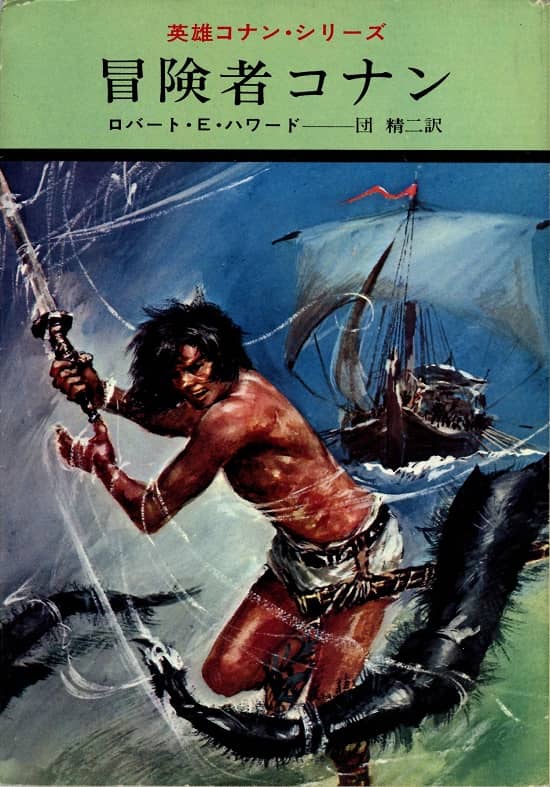
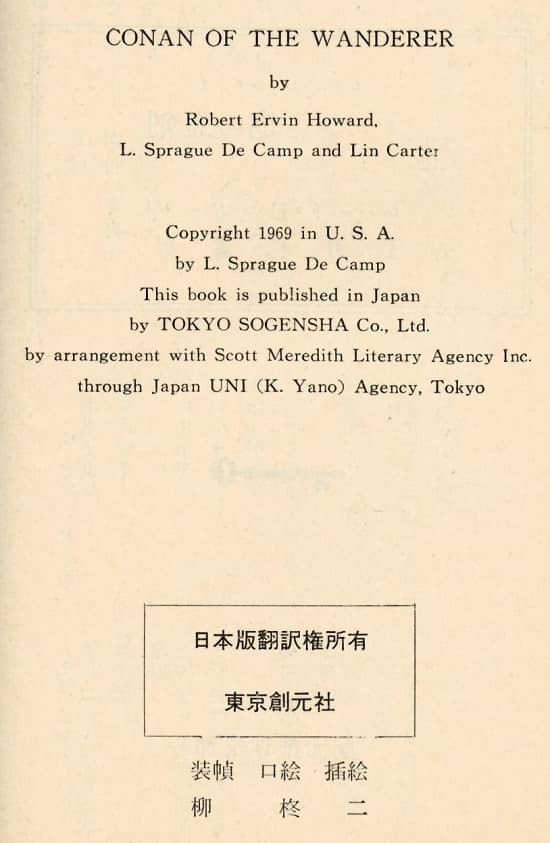
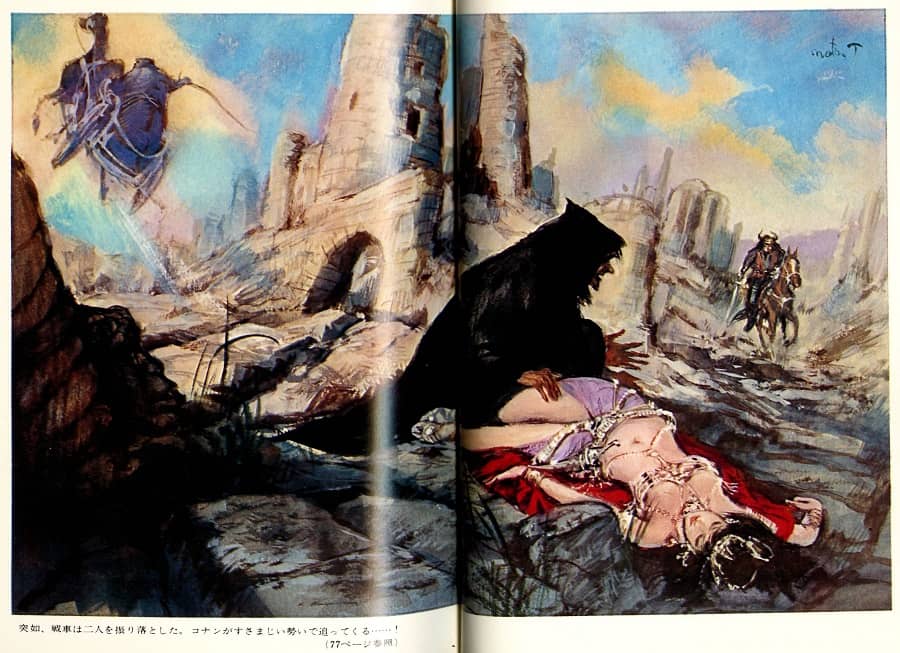
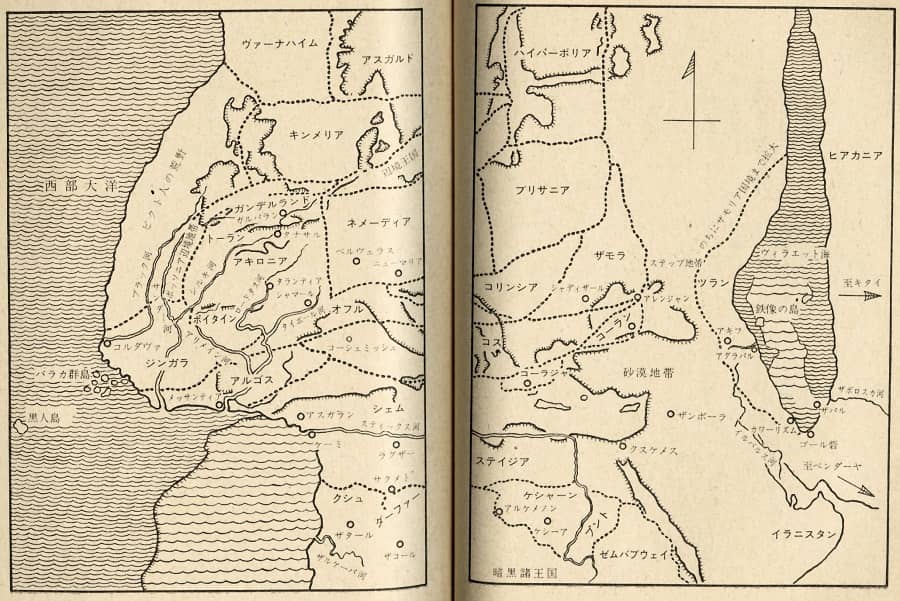
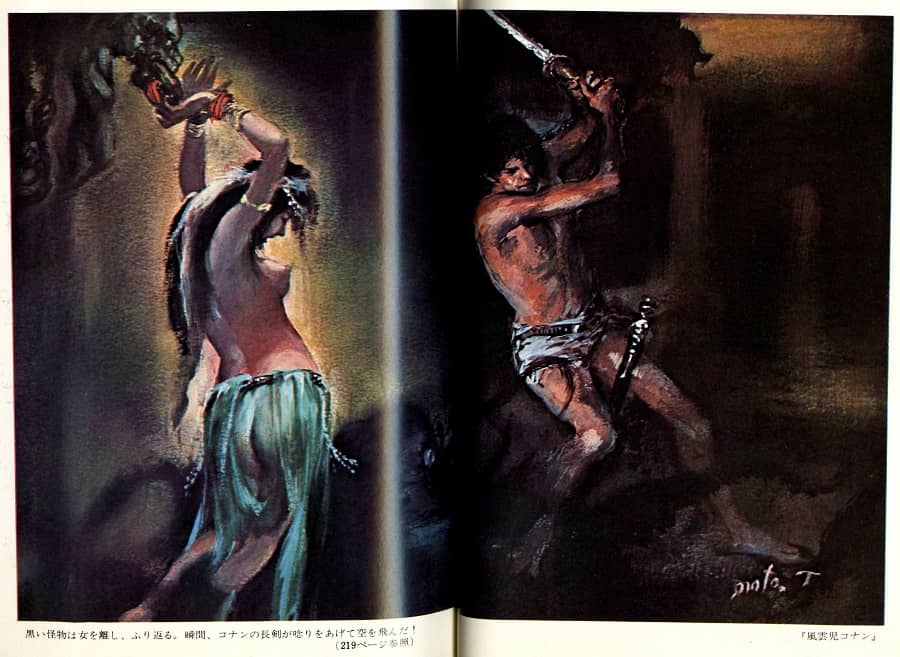
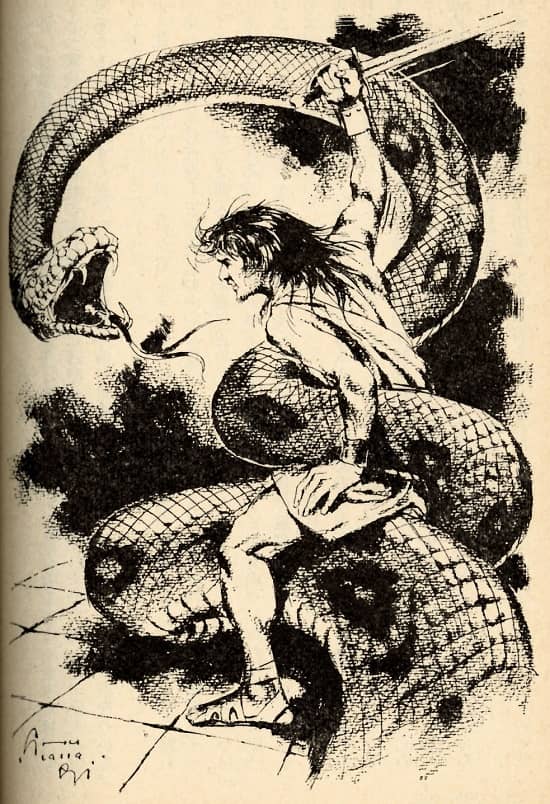
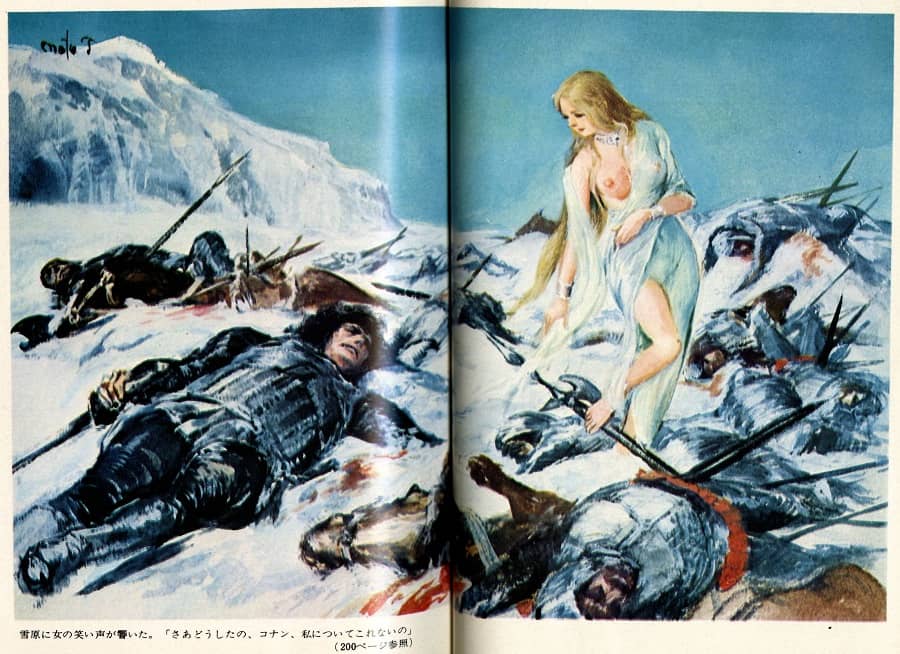
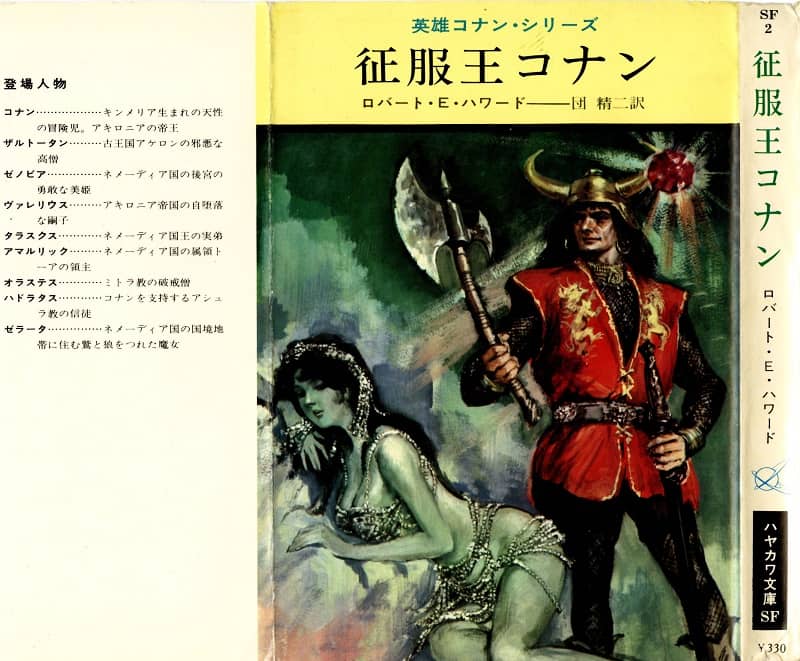
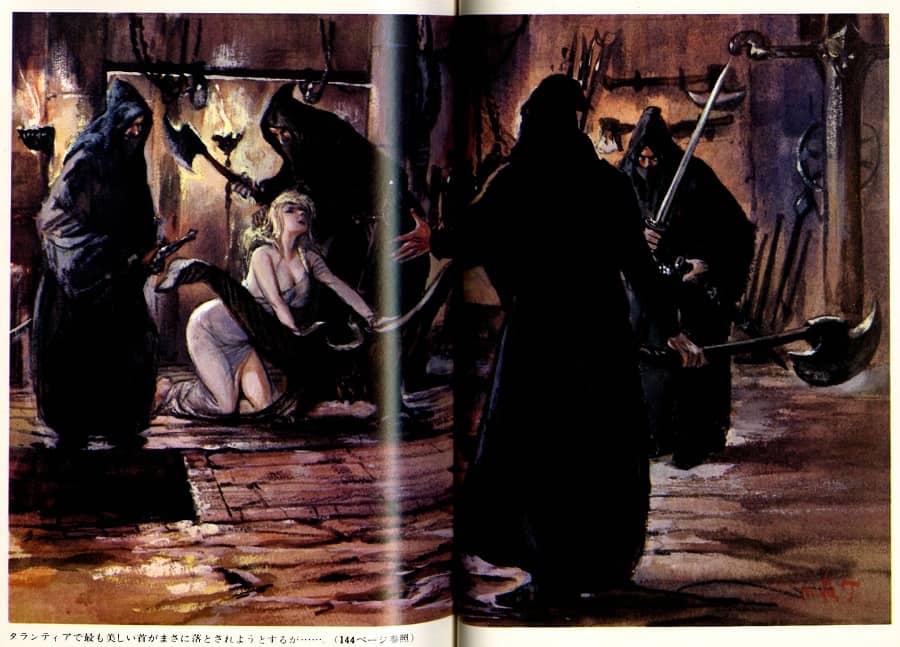
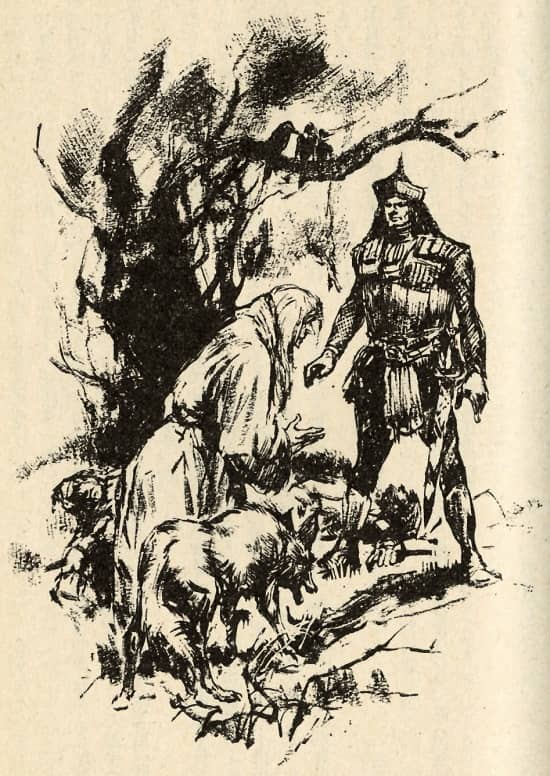
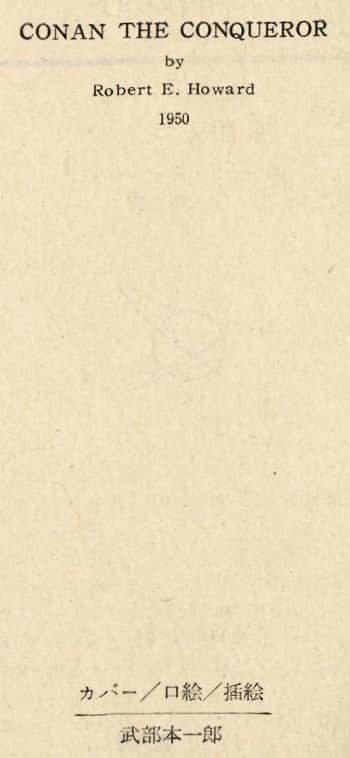
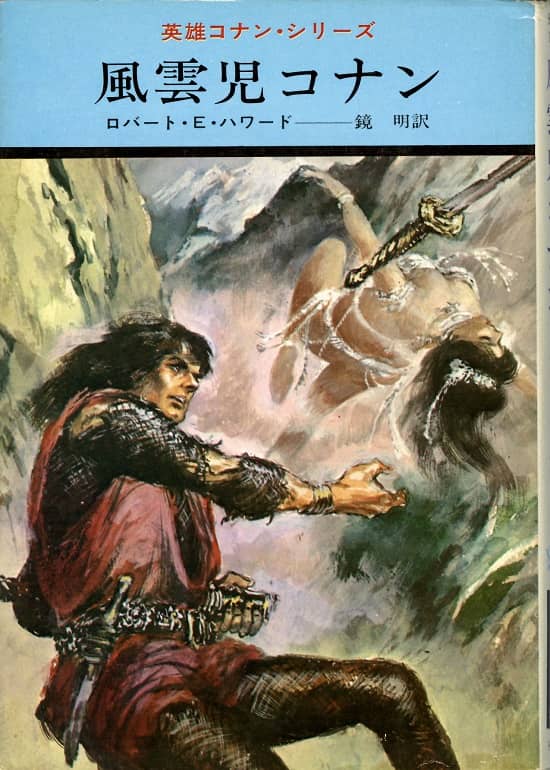
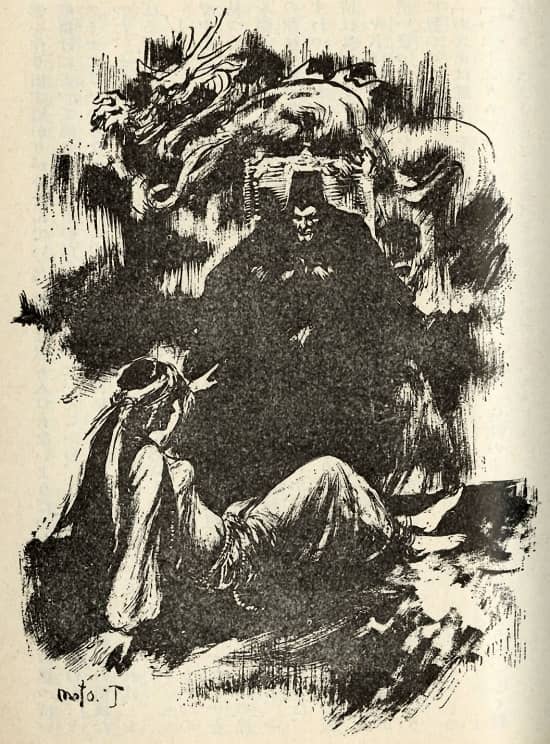
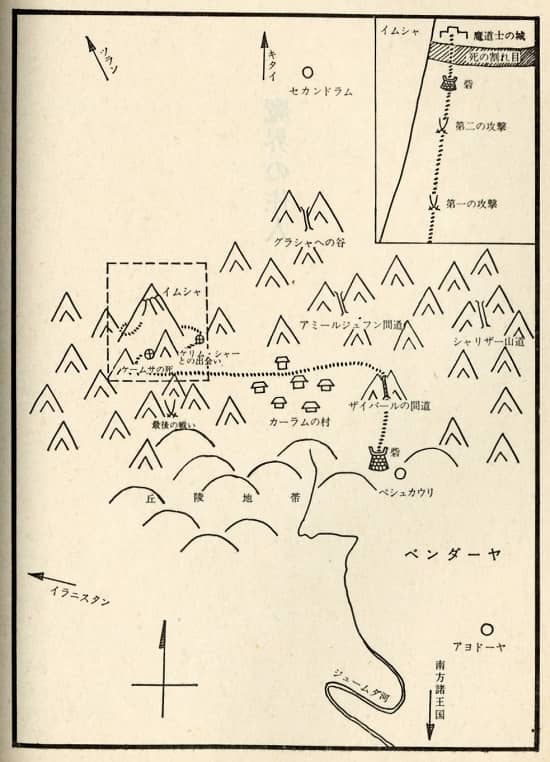
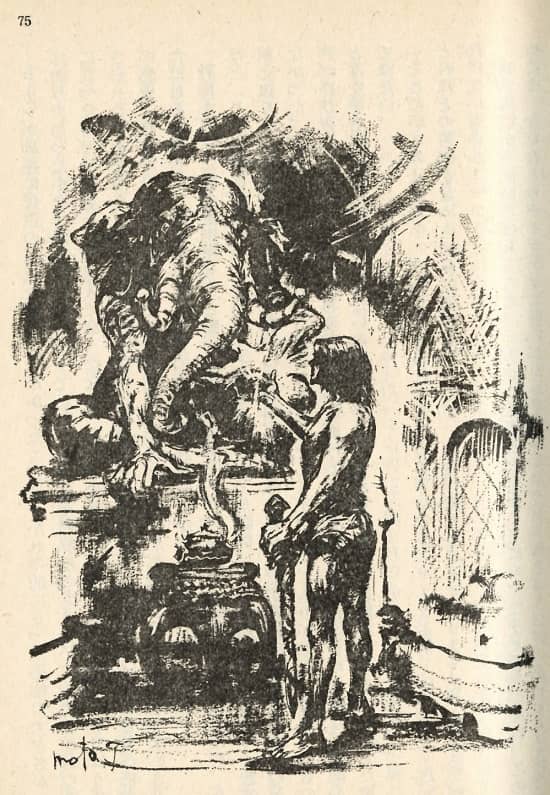
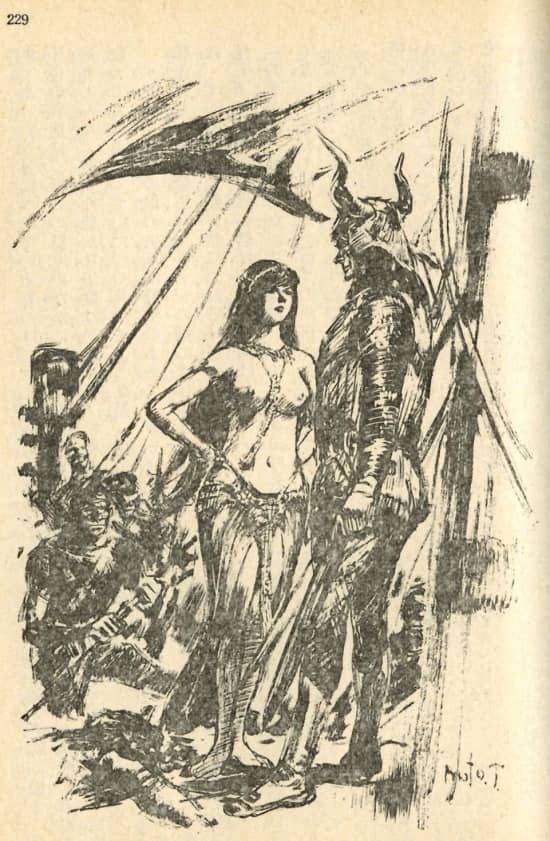
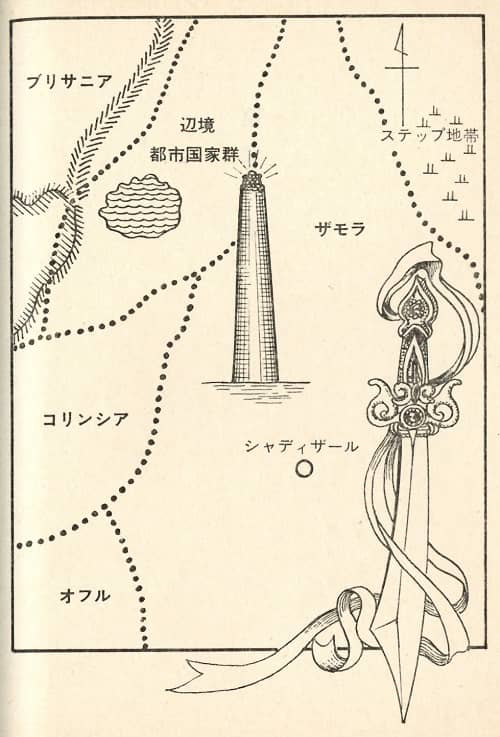
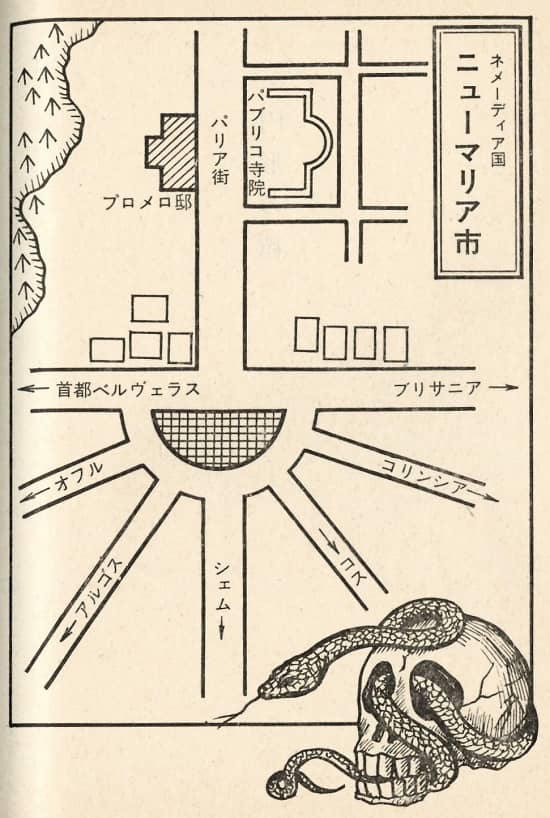
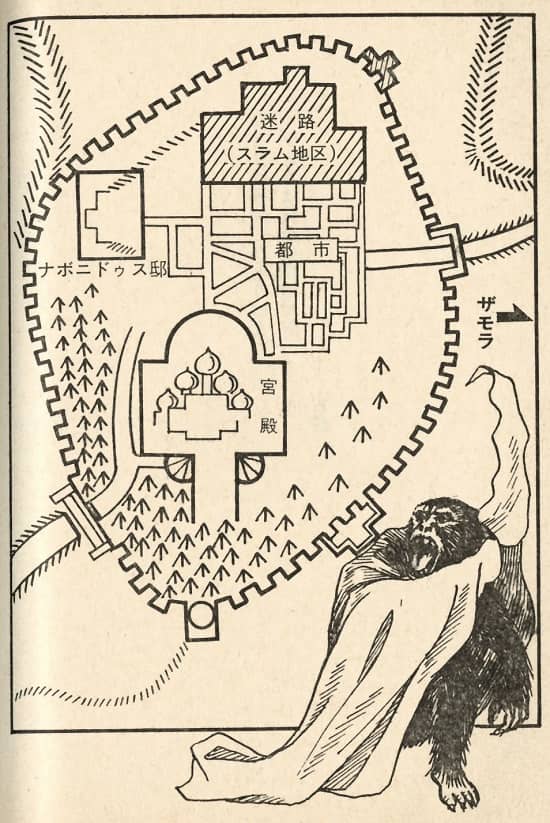
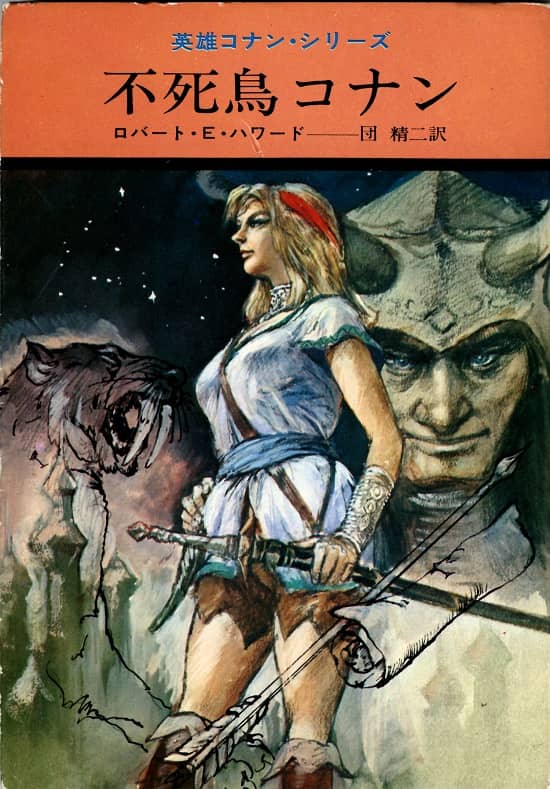
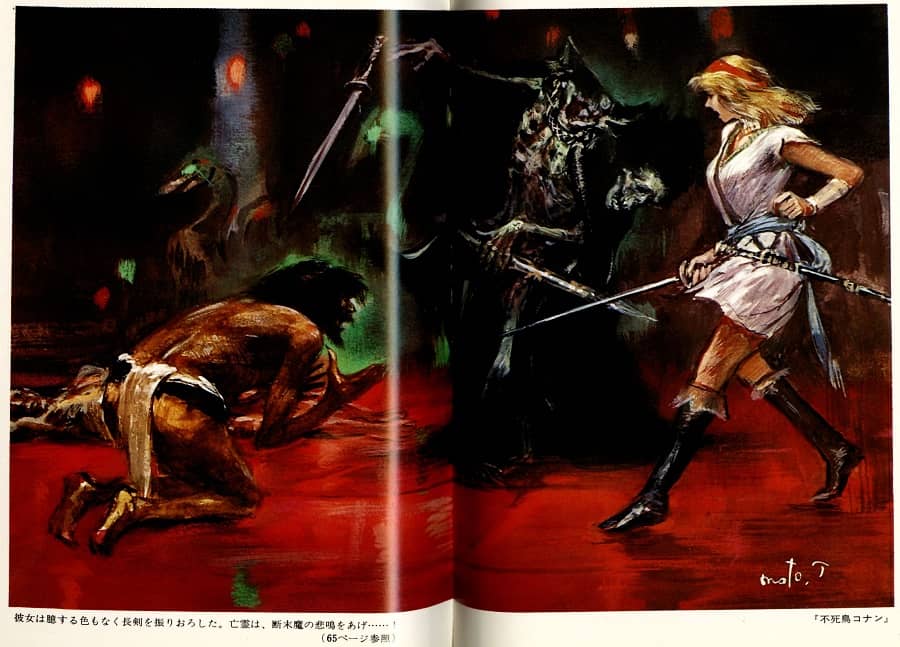
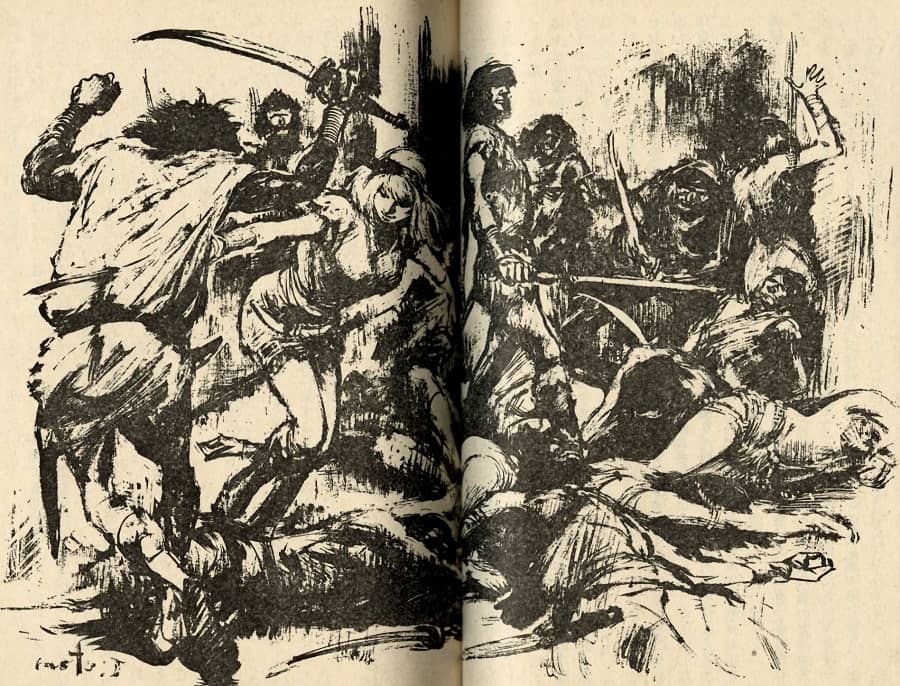
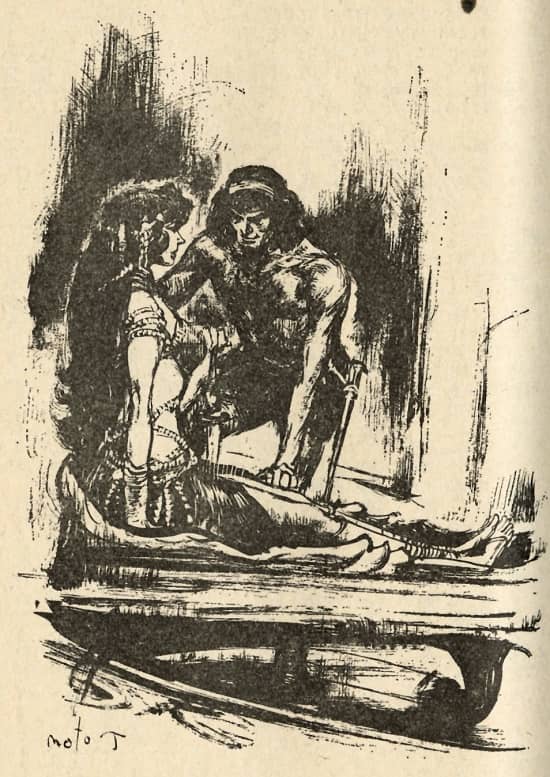
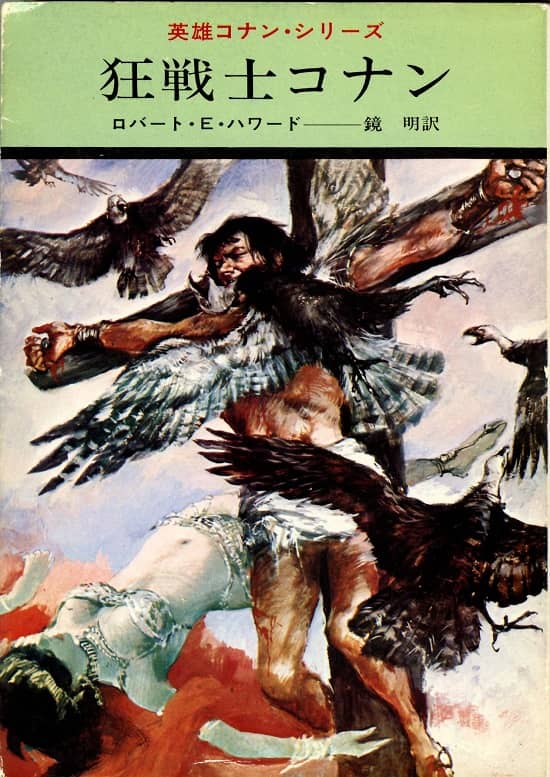
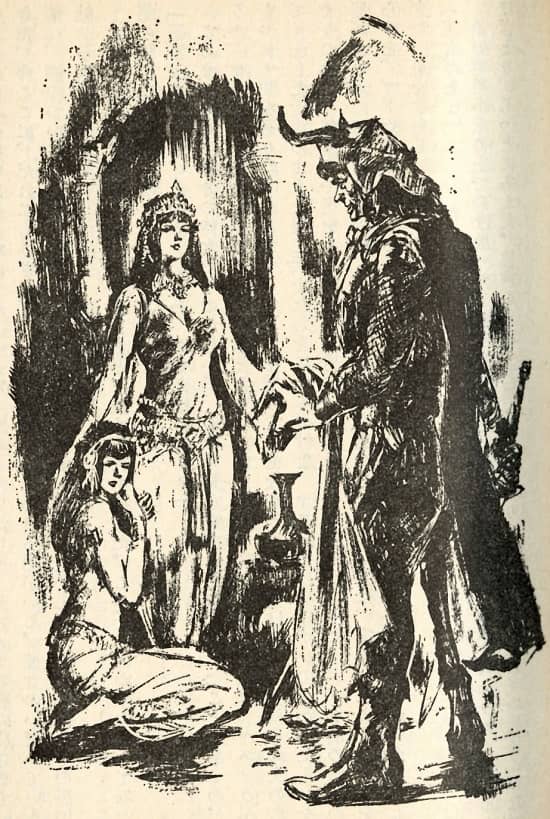
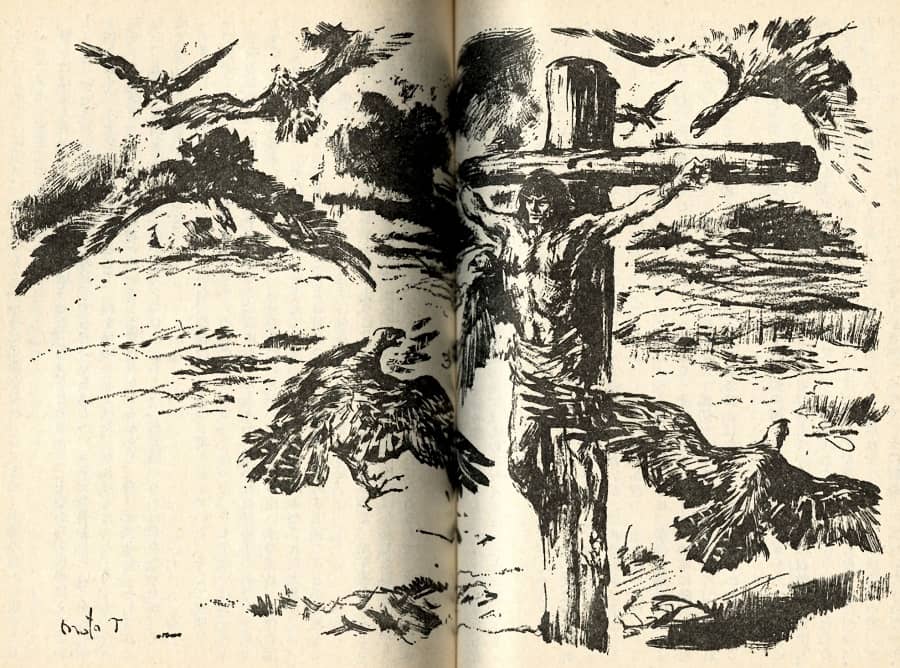
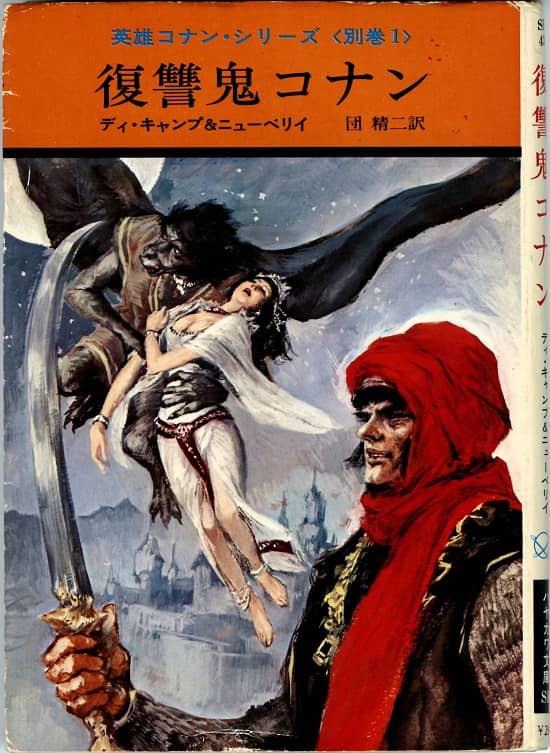
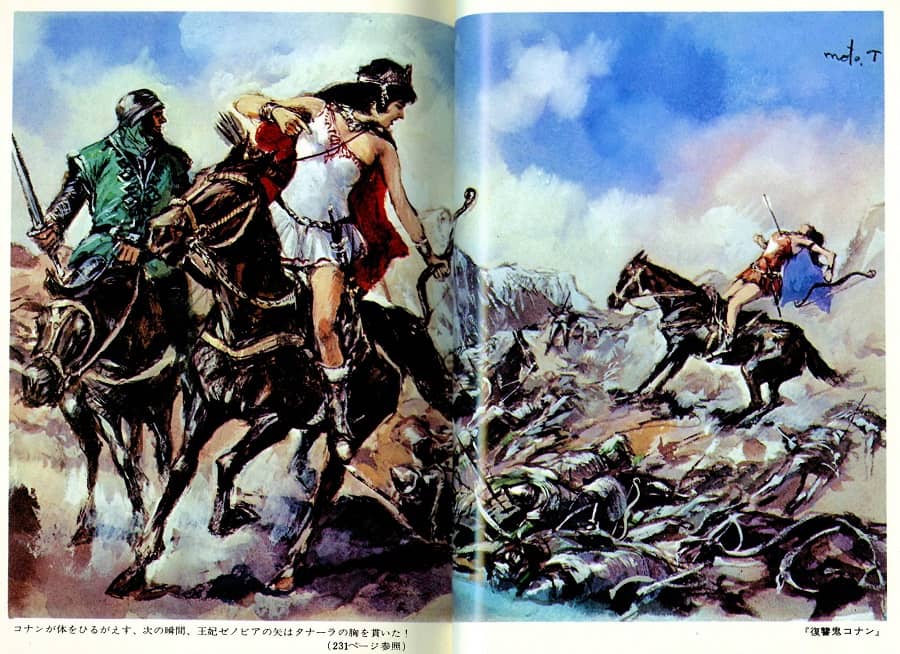
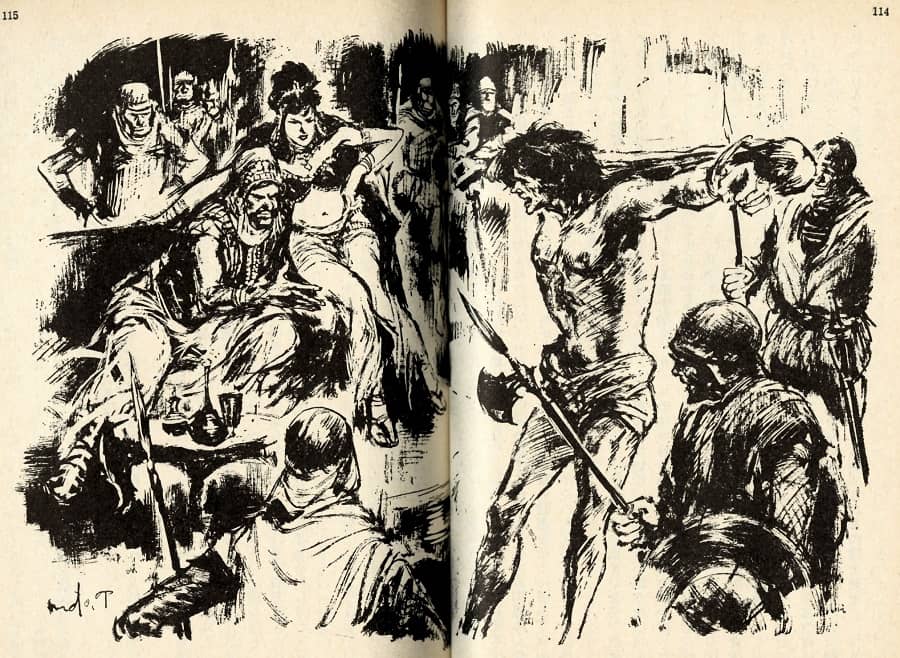
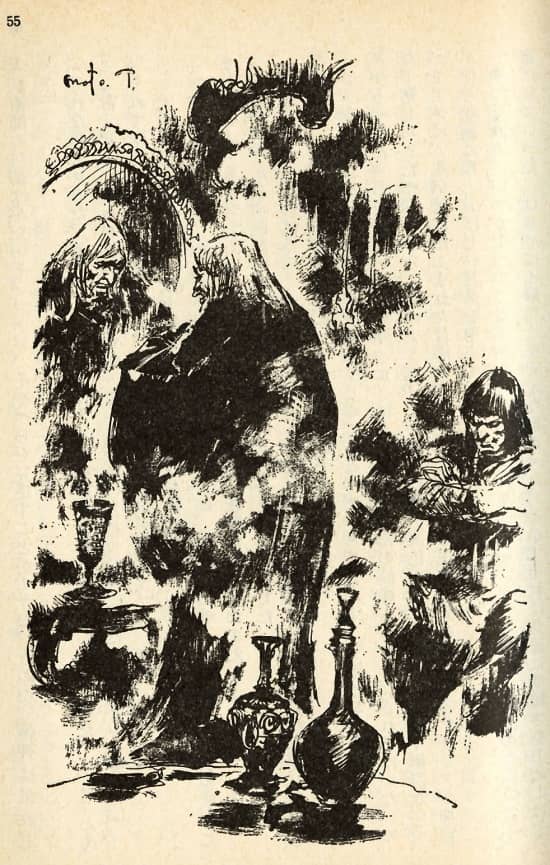
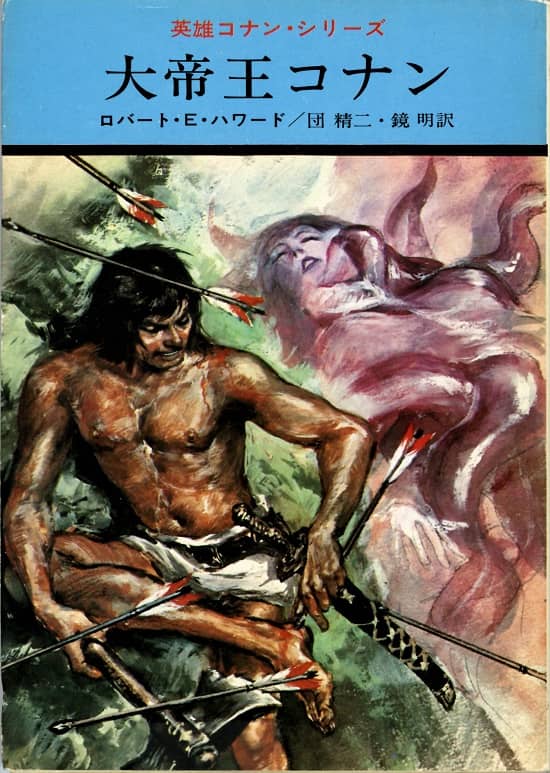
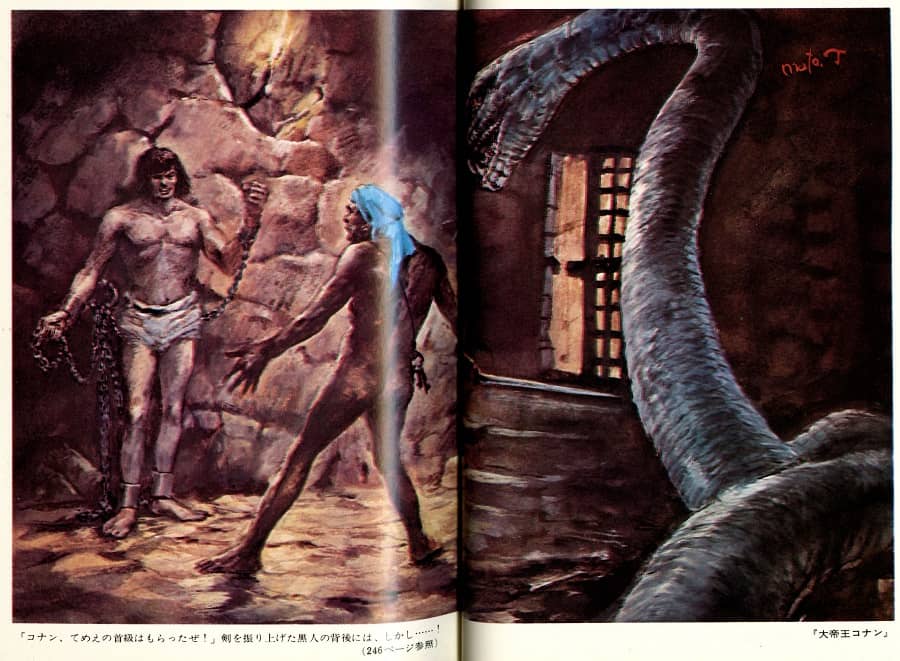
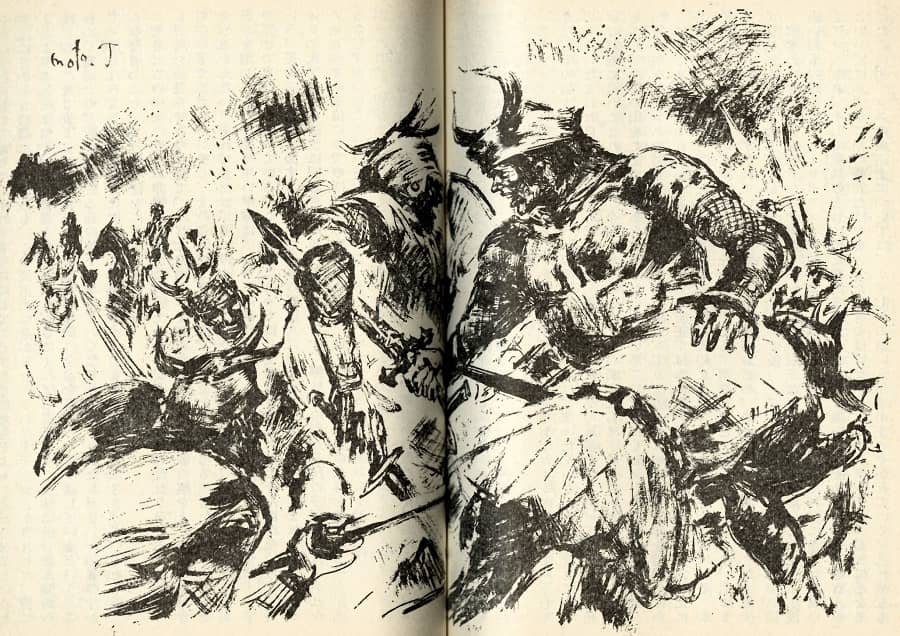
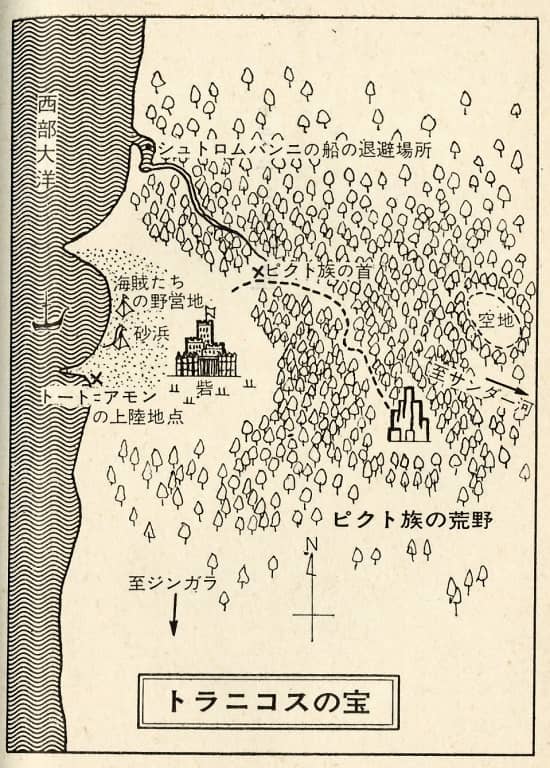
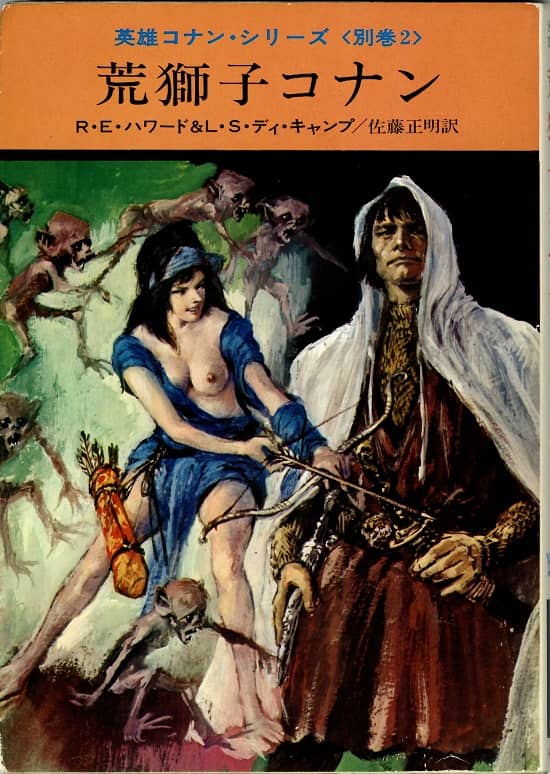
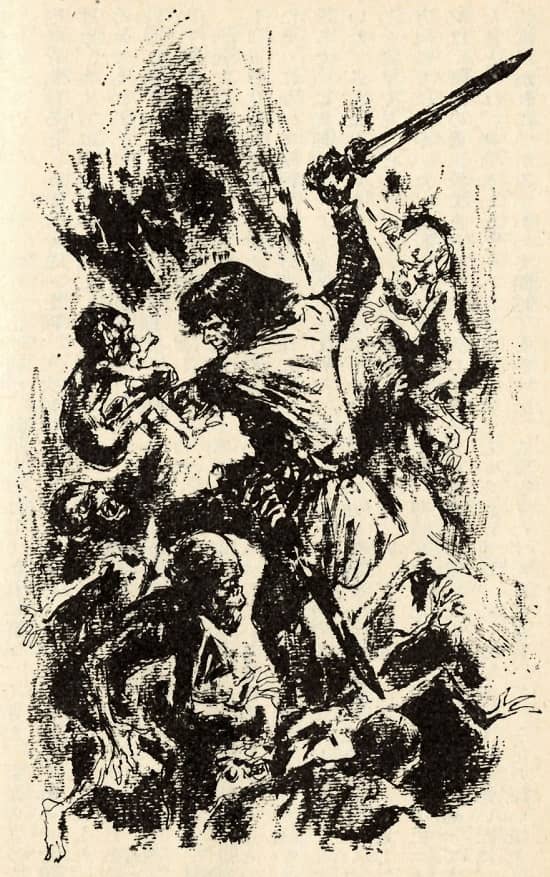
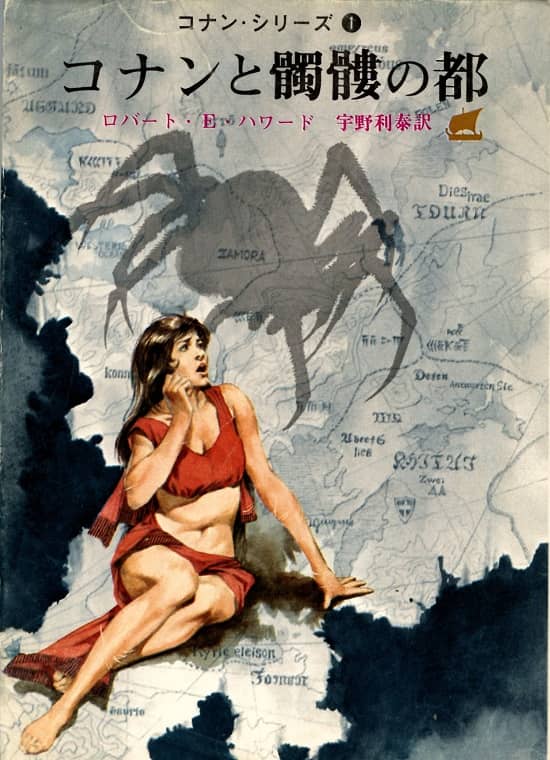
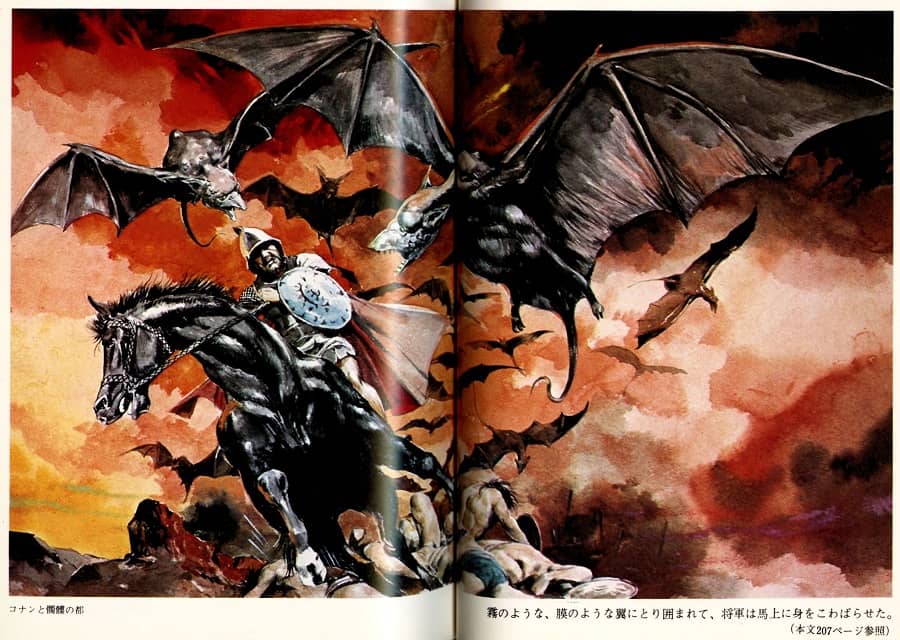
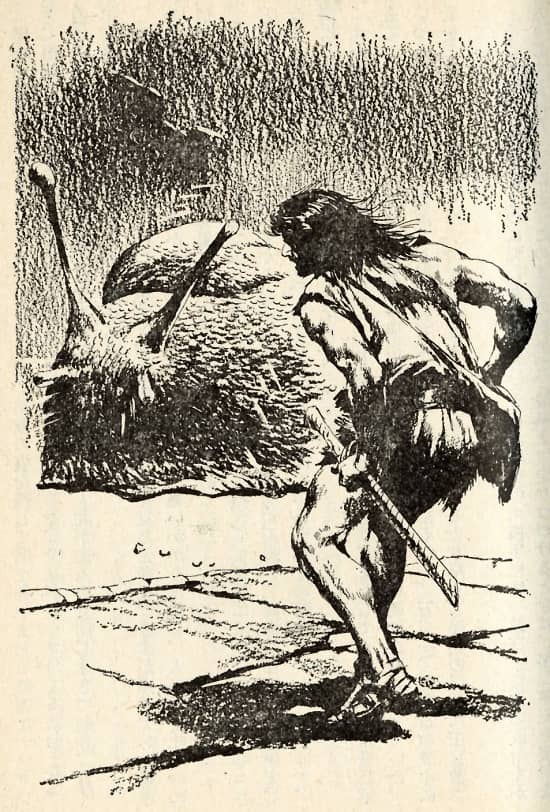
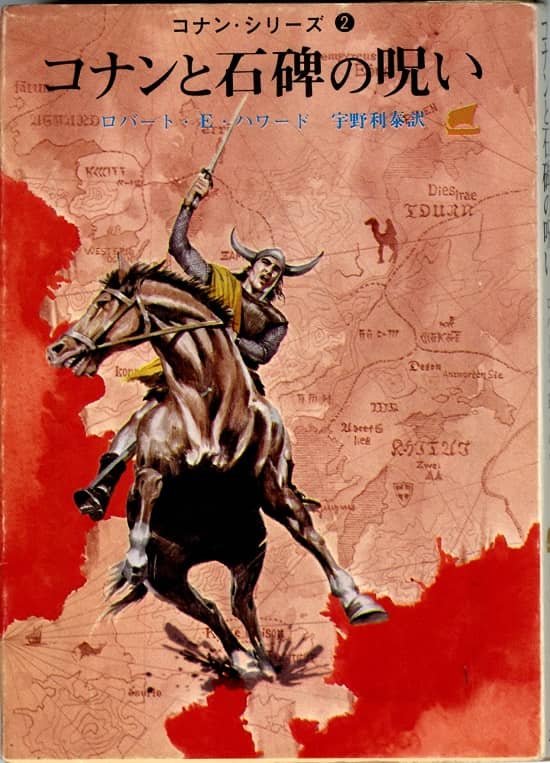
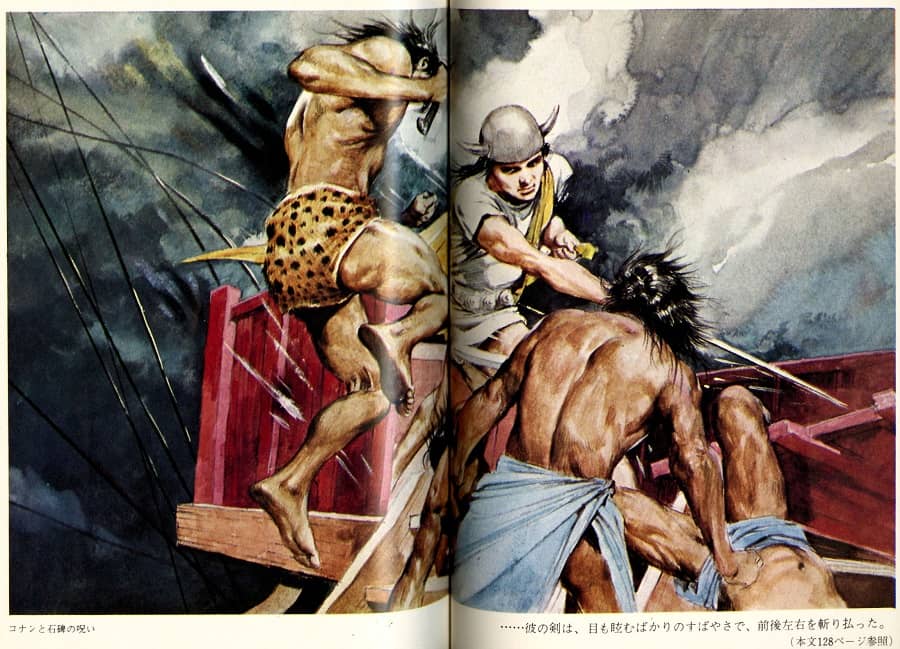
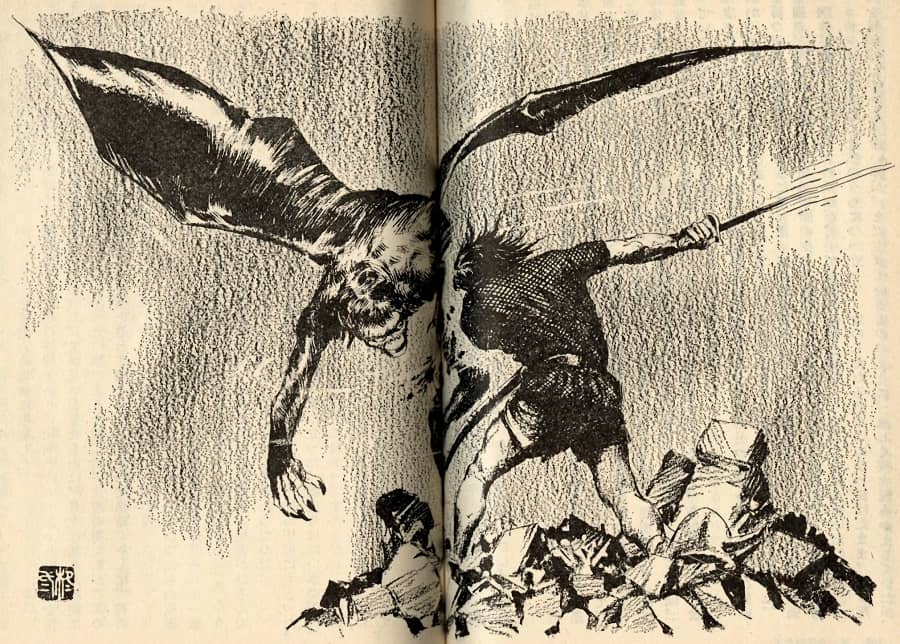
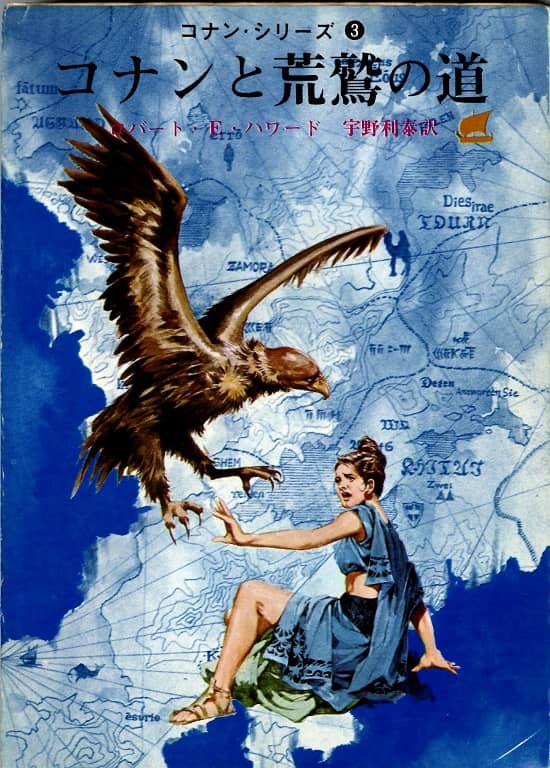
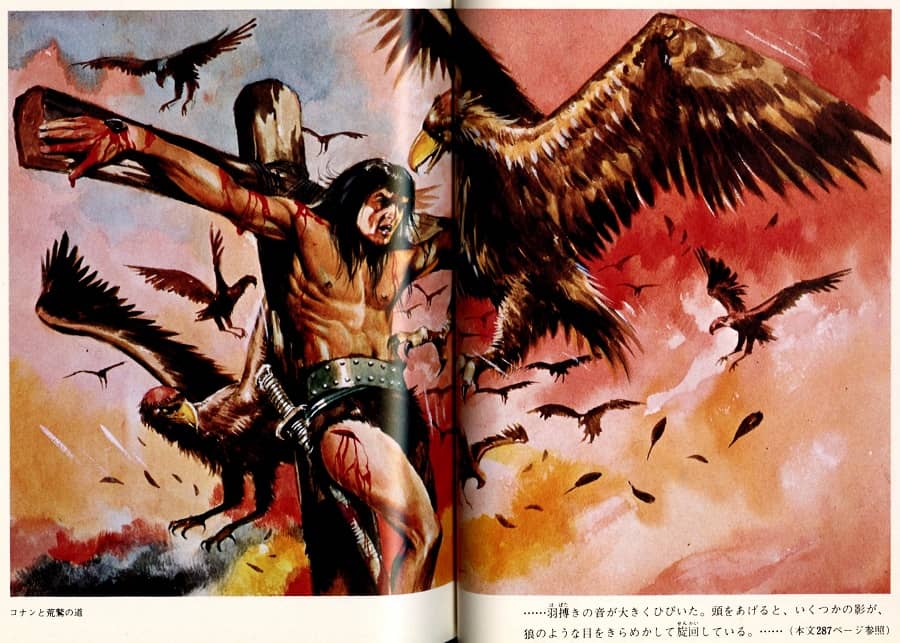
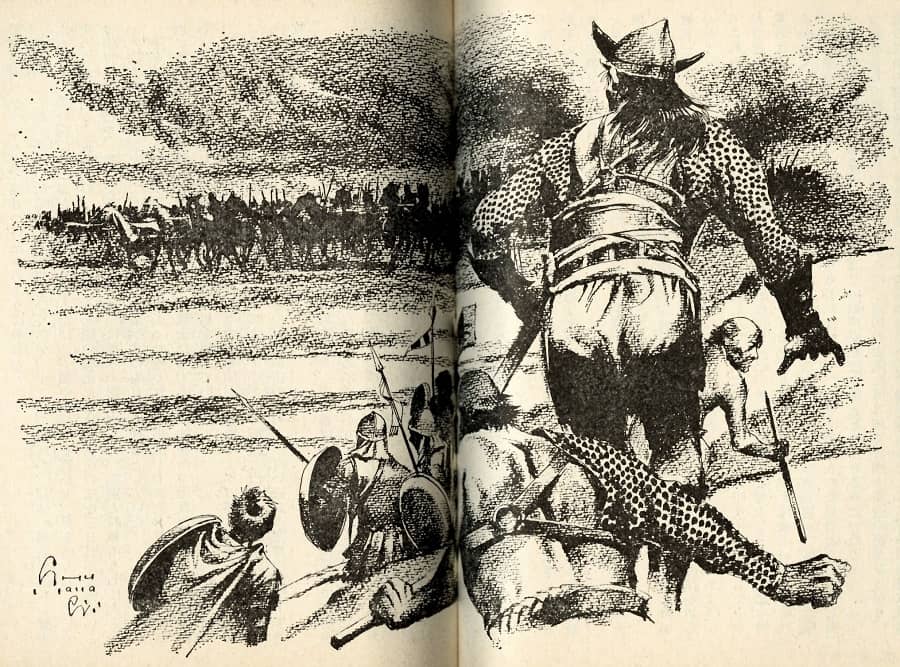
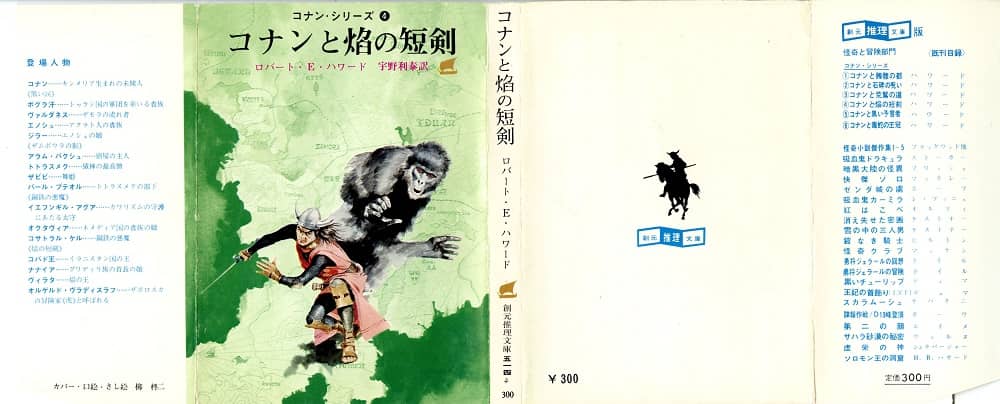
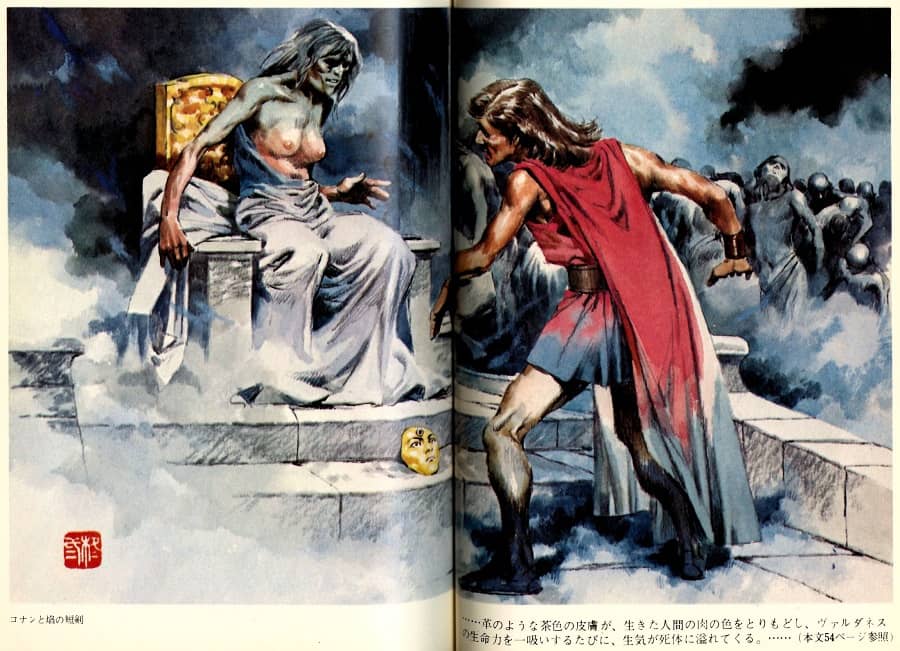
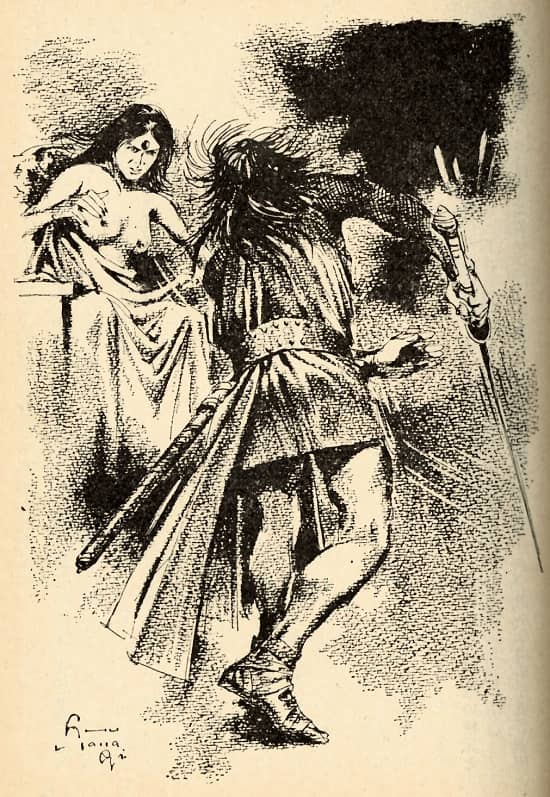
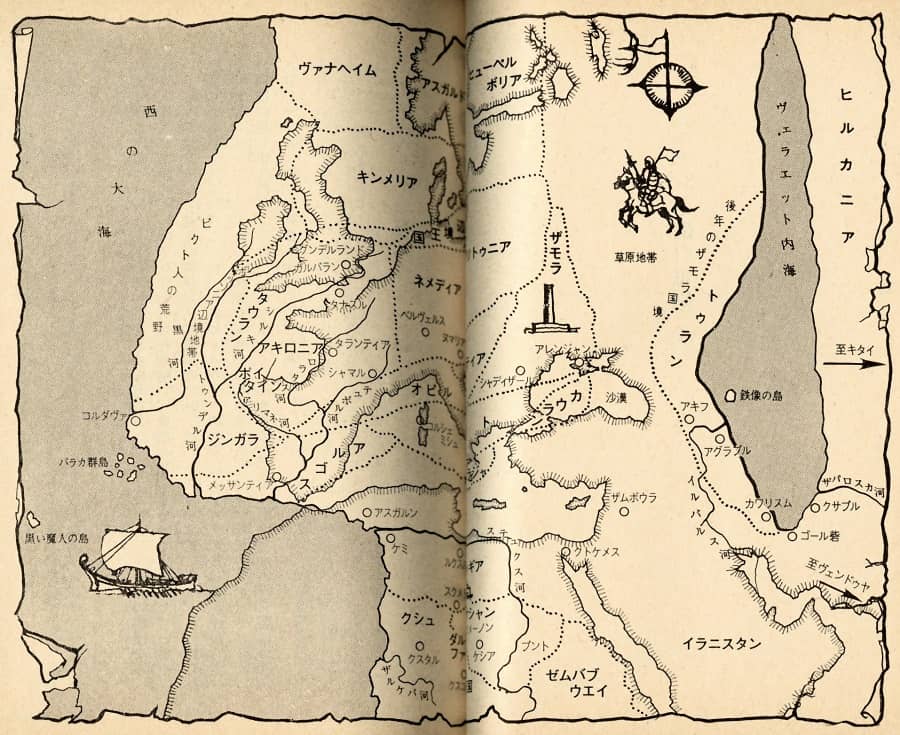
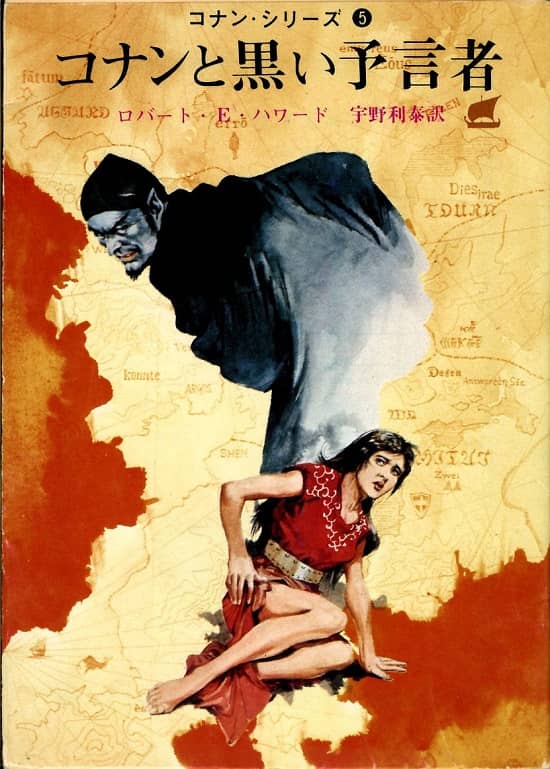
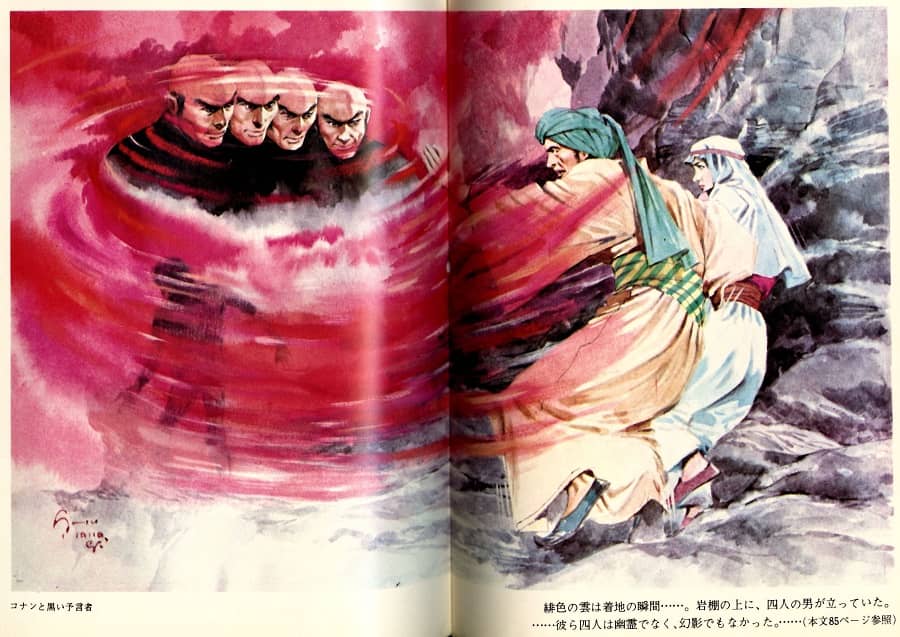
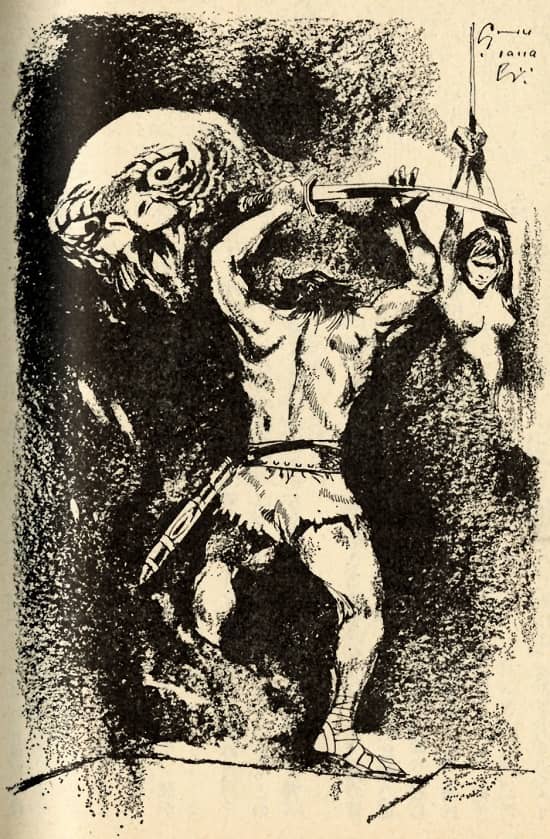
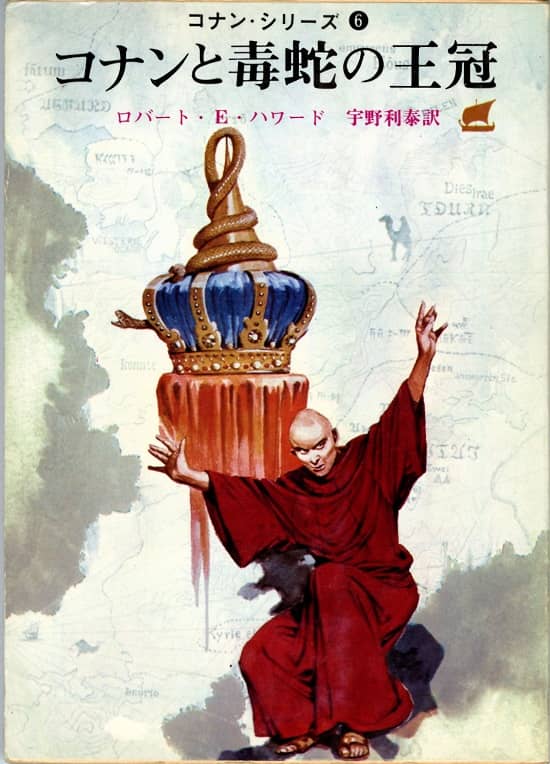
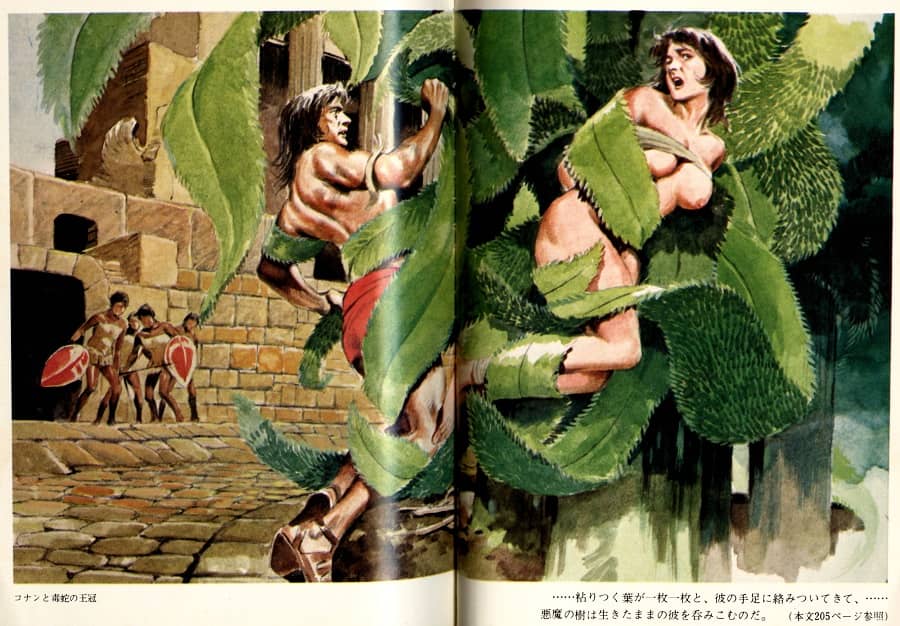
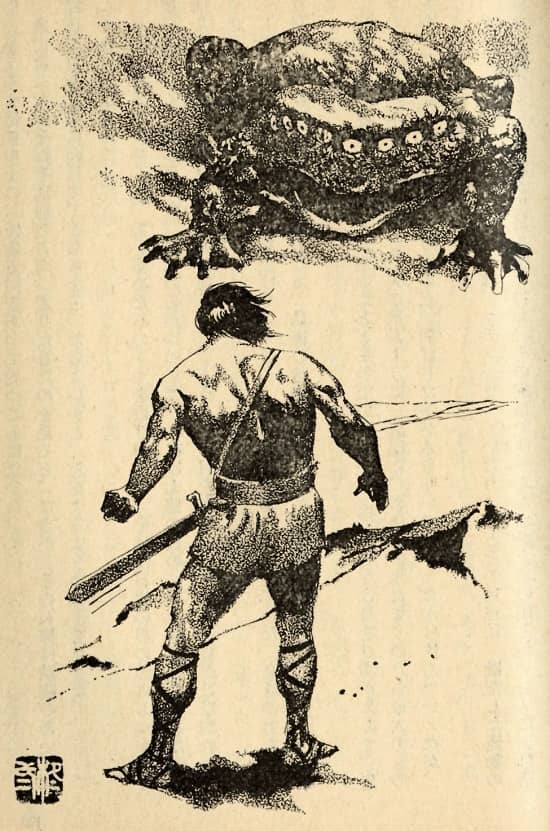
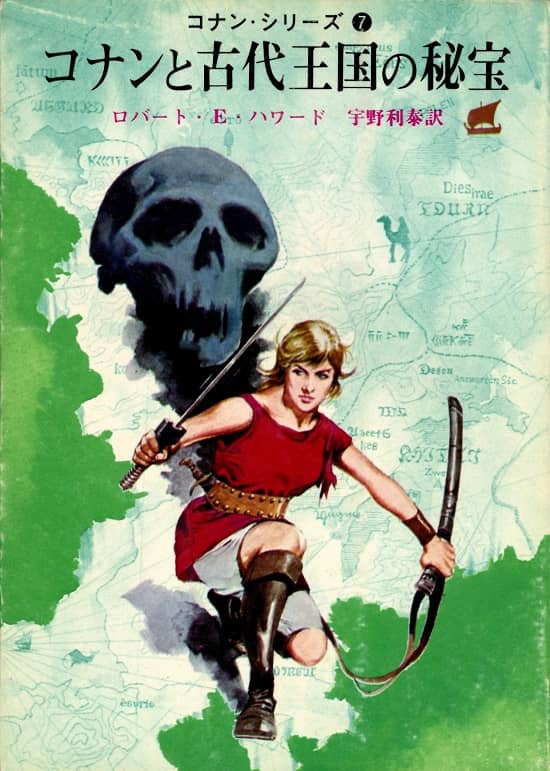
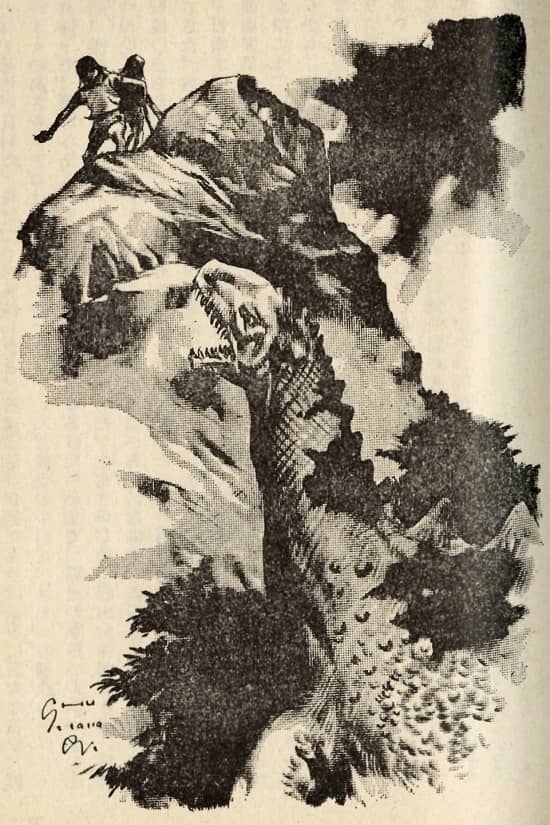
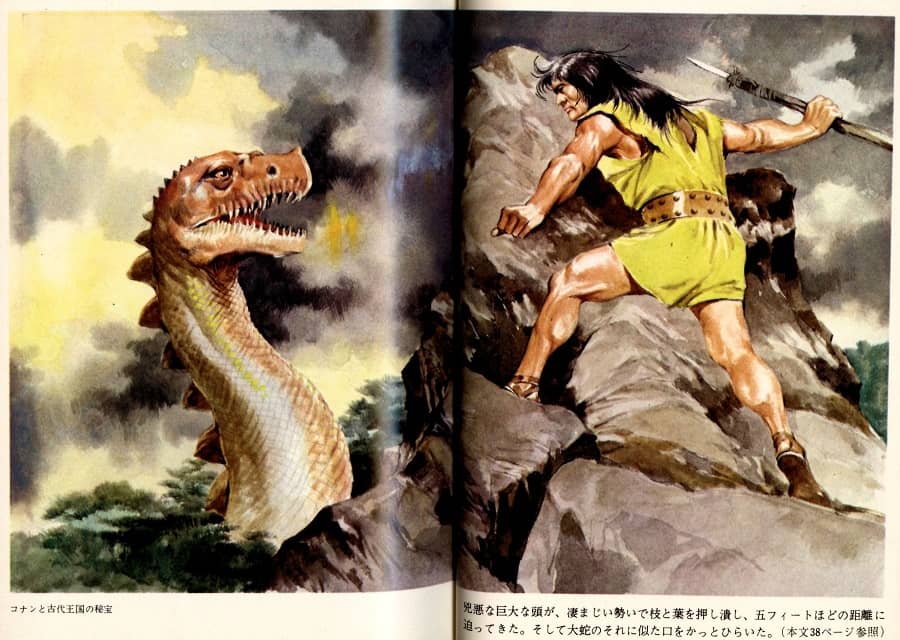
Very interesting post. Thank you for writing such a comprehensive article and thank goodness you recovered those scans.
Great article thanks for sharing it Doug
Thank you, I have never seen those books in such detail.
I think R.E.H. would have liked those diagrams. And the background maps on the covers seem like a great idea to me.
I wasn’t sure Howard was even translated to Japanese. His pal Lovecraft is very big over there but I did not know about Howard. These are great illustrations.
I didn’t know that about Lovecraft. Do you know of any places to find examples of those translations online?
To be honest I don’t know about translations. I know he has influenced horror writers over there. Junji Ito, probably the best creator of horror comics anywhere on the planet was heavily influenced by him. (His stuff may be good for an article here.) I’ve seen reference to Cthulhu Mythos in various works by Japanese creators. In fact, there are manga adaptions to Lovecraft’s fiction.
Here’s a page about it.
http://theunspeakableoath.com/home/2016/03/mythos-in-the-media-lovecraft-in-japan/
Cool! Does anyone have links for more artwork by Takebe Motoichiro?
The artwork is incredible.
Thanks Doug for sharing this. I am curious, as to what this collection may have sold for?
Other than that i a merely going to echo the other, what incredible artwork. Some of the most believable renditions of Conan and friends I for one have encountered!
An excellent article. While I’ve know on these translations and seen the covers, I hadn’t seen the interior artwork which is superb in its own way. A distinctly Japanese flavour to many of the illustrations. I particularly like the two Hyborian Age maps. I’ll now have to update my articles on map examples. Lots to comment on in my next REHupa journal.
[…] Gate surveys R.E. Howard in Japan in the new “Conan in the Land of the Rising Sun”. He discovers a rich trove of illustrations and maps little-known in the west, and shows […]